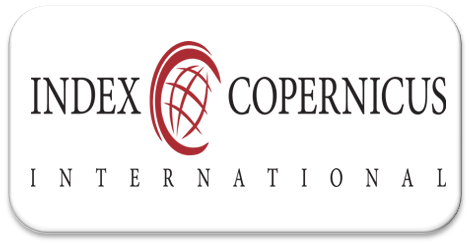An Analysis of Flora Symbols in the Qur'an from the Perspective of Charles Sanders Peirce
Abstract
Symbols are important elements that are often used in everyday life. The Qur'an contains many messages which are depicted using certain symbols. The current reality is that there are still many who do not know and understand the symbols used in the Koran. This research will explore and discuss the use of flora symbols used in the Qur'an. These symbols are important to know and understand with the aim of understanding the messages contained in the Qur'an. This research uses a qualitative descriptive research type. Data analysis in this research uses the triangle meaning semiotic theory from Carles Sanders Peirce's perspective. After carrying out the analysis, this research found that there are 25 verses in the Qur'an that use flora symbols, which are divided into 2 classifications, namely general and specific symbol mention classifications. Which is divided into 3 general mentions of floral symbols and 7 specific mentions of floral symbols. The symbols mentioned are generally used in the Qur'an to show God's power and mercy in everything that has been created. Meanwhile, the Qur'an uses specific mention of flora symbols to show the benefits of flora in the continuity of human life.
Keywords
Full Text:
PDFReferences
Ainina, Raudhah Nurul. “Buah Kurma (Phoenix Dactylifera) Dan Pemanfaatannya Terhadap Kesehatan (Literature Review),” 2021.
Anasiatul, Anasiatul Aisiyah, Indana Zulfa Kumala, and Riski Yanti. “Urgensi Kemukjizatan Al-Quran Di Masa Modern.” Advances in Humanities and Contemporary Studies 3, no. 1 (2022): 55–62.
Danesi, Marcel. “Pesan, Tanda, Dan Makna.” Yogyakarta: Jalasutra, 2010.
Fadhliyah, Ziyadatul. “Semiotika Ferdinan De Saussure Sebagai Metode Penafsiran Al-Qur’an: Kajian Teoritis.” Al-Afkar, Journal For Islamic Studies, 2021, 109–22.
Febriati, Andariningtyas Putri, Firlie Bastia Putty Zahra, Nadya Yundasari, and Nia Yuniarsih. “Manfaat Ekstrak Buah Delima (Punica Granatum L.) Sebagai Zat Aktif Dalam Formulasi Sediaan Kosmetika.” Jurnal Health Sains 3, no. 6 (2022): 793–97. https://doi.org/https://doi.org/10.46799/jhs.v4i06.516.
Fitra Dahlia, Fitra. “Khasiat Buah Labu Bagi Kesehatan Perspektif Hadis (Kajian I’jaz Ilmi Fi Hadis).” Universitas Islam Negeri Sultan Syarif Kasim Riau, 2022.
Hendro, Eko Punto. “Simbol: Arti, Fungsi, Dan Implikasi Metodologisnya.” Endogami: Jurnal Ilmiah Kajian Antropologi 3, no. 2 (2020): 158–65.
Hidayat, Hamdan. “Simbolisasi Warna Dalam Al-Qur’an Analisis Semiotika Charles Sanders Peirce.” Ibn Abbas: Jurnal Ilmu Alquran Dan Tafsir 3, no. 2 (2022).
Khairulanwar Abdul Ghani, and Noriah Mohamed. “Analisis Sosiosemiotik Terhadap Konsepsi Lambang Flora Dalam Pantun Nasihat.” Journal of Advanced Research Design Journal Homepage 57, no. 1 (2019): 1–20.
Khoirunnisa, Ida, Rakhmiyati Rakhmiyati, and Risti Widyaningsih. “Keistimewaan Zaitun Dalam Perspektif Islam Dan Sains.” Prosiding Konferensi Integrasi Interkoneksi Islam Dan Sains 2 (2020): 75–77.
Marietti, Susanna, and Rossella Fabbrichesi. Semiotics and Philosophy in Charles Sanders Peirce. Cambridge Scholars Publishing, 2009.
Moleong, Lexy J. “Qualitative Research Methodology.” Bandung, PT Remaja Rosdakarya, Year, 2007.
Nabila, Jihan Rahmi. “Potensi Buah Anggur Sebagai Anti Aging Alami Dalam Perspektif Sains Dan Islam.” Konferensi Integrasi Interkoneksi Islam Dan Sains 4, no. 1 (2022): 150–54.
Peirce, Charles Sanders. Peirce on Signs: Writings on Semiotic. UNC Press Books, 1991.
Purba, Friokto Winra, Junifer Siregar, and Vita Riahni Saragih. “Analisis Semiotik Simbol Terhadap Bangunan Rumah Adat Suku Simalungun Kabupaten Simalungun.” Morfologi: Jurnal Ilmu Pendidikan, Bahasa, Sastra Dan Budaya 1, no. 6 (2023): 91–103.
Ramadhanti, Nova. “Khasiat Buah Tin (Fiscus Carica L.) Dalam Perspektif Al-Qur’an Dan Sains.” Es-Syajar: Journal of Islam, Science and Technology Integration 1, no. 2 (2023): 102–9. https://doi.org/https://doi.org/10.18860/es.v1i2.23342.
Rambe, Halimah Tusaddiah, Syahrul Abidin, and Achiriah Achiriah. “Analisis Semiotika Film Negeri Di Bawah Kabut.” Berajah Journal: Jurnal Ilmiah Pembelajaran Dan Pengembangan Diri 2, no. 4 (2022): 989–98. https://doi.org/https://doi.org/10.47353/bj.v2i4.188.
Rifaannudin, Mahmud. “Manfaat Tumbuhan Dalam Al Qur’an Bagi Kesehatan (Pendekatan Tafsir Ilmi).” Al-Muhafidz 2, no. 1 (2022): 87–100.
Rokhim, Saiku, Ninik Fadhillah, Radinal Kautsar, and Yuanita Rachmawati. “Mengenal Lebih Dekat Delima: Buah Surga Kaya Manfaat,” 2023.
Rozudin, Balya. “Analisis Semantik Kata Dzarrah Dan Padanannya Dalam Al-Qur’an.” UIN Sunan Gunung Djati Bandung, 2022.
Saleh, Solehah. “Penggunaan Flora Sebagai Perumpamaan Di Dalam Al-Quran.” Master’s Thesis, Universiti Putra Malaysia, 2017.
Saras, Tresno. Buah Tin: Keajaiban Kesehatan Dari Alam. Tiram Media, 2023.
Savitri, Aisya Nabila, and Muhammad Reza Fahlevi. “Manfaat Dan Kandungan Buah-Buahan Dalam Al-Qur’an.” Islamic Education 1, no. 4 (2023): 472–81.
Shihab, Muhammad Quraish. Lentera Al-Quran: Kisah Dan Hikmah Kehidupan. Mizan Pustaka, 2008.
Sihombing, Muhammad Ebin Rajab. “Menelisik Makna Syajarah Dalam Al-Qur’an : Analisis Semantik Toshihiko Izutsu.” Basha’ir: Jurnal Studi Alquran Dan Tafsir 3, no. 2 (2023): 61–73.
Suherman, Enjang. “Pemanfaatan Buah Tin Untuk Perekonomian Dan Kesehatan.” Jurnal Buana Pengabdian 1, no. 1 (2019): 6–14.
Syamsuddin, Sahiron. “Metodologi Penelitian Living Qur’an Dan Hadis.” Yogyakarta: Teras, 2007.
Syukran, Agus Salim Syukran Agus Salim. “Fungsi Al-Qur’an Bagi Manusia.” Al-I’jaz: Jurnal Studi Al-Qur’an, Falsafah Dan Keislaman 1, no. 2 (2019): 90–108.
Yusoff, Ahmad Nasir Mohd, Muhammad Hannan Abdul Aziz, and Mohamad Maulana Magiman. “Kajian Tematik Buah-Buahan Dalam Al-Quran Dan Penggunaannya Untuk Rawatan Perubatan Islam.” ANP Journal of Social Science and Humanities 3 (2022): 10–16. https://doi.org/https://doi.org/10.53797/anp.jssh.v3sp.2.2022.
Zaedi, Muhamad. “The Importance to Understand the Al-Qur’an and Knowledge (Pentingnya Memahami Al-Qur’an Dan Ilmu Pengetahuan).” Risâlah, Jurnal Pendidikan Dan Studi Islam 5, no. 1, March (2019): 62–70.
Zamilatul, Azkiyah Siti, and Hayatul Rahimah. “Analisis Kadar Zat Besi (Fe) Dan Vitamin C Pada Ekstrak Buah Kurma (Phoenix Dactylifera L.).” Formosa Journal of Science and Technology 1, no. 4 (2022): 363–74. https://doi.org/https://doi.org/10.55927/fjst.v1i4.1065.
DOI: http://dx.doi.org/10.22373/tafse.v9i1.22043
Refbacks
- There are currently no refbacks.
Copyright (c) 2024 Moh. Buny Andaru Bahy, Helmi Syaifuddin, Muhammad Fatih Budiman Putra, Moh. Rizalul Wakhid

This work is licensed under a Creative Commons Attribution-NonCommercial 4.0 International License.
INDEX BY:
Journal Secretariat:
Al-Qur'an and Tafsir Department, 1st Floor, Faculty of Ushuluddin and Philosophy, Universitas Islam Negeri Ar-Raniry Banda Aceh Indonesia. Jln. Syeikh Abdul Rauf, Kopelma Darussalam Banda Aceh, Indonesia. Post Code: 23111.
Email: tafse@ar-raniry.ac.id
TAFSE: Journal of Qur’anic Studies, e-ISSN: 2775-5339, p-ISSN: 2620-4185



.png)

.png)

.png)
.png)
.png)









.png)

.png)
.png)
.png)
.png)
.png)
.png)